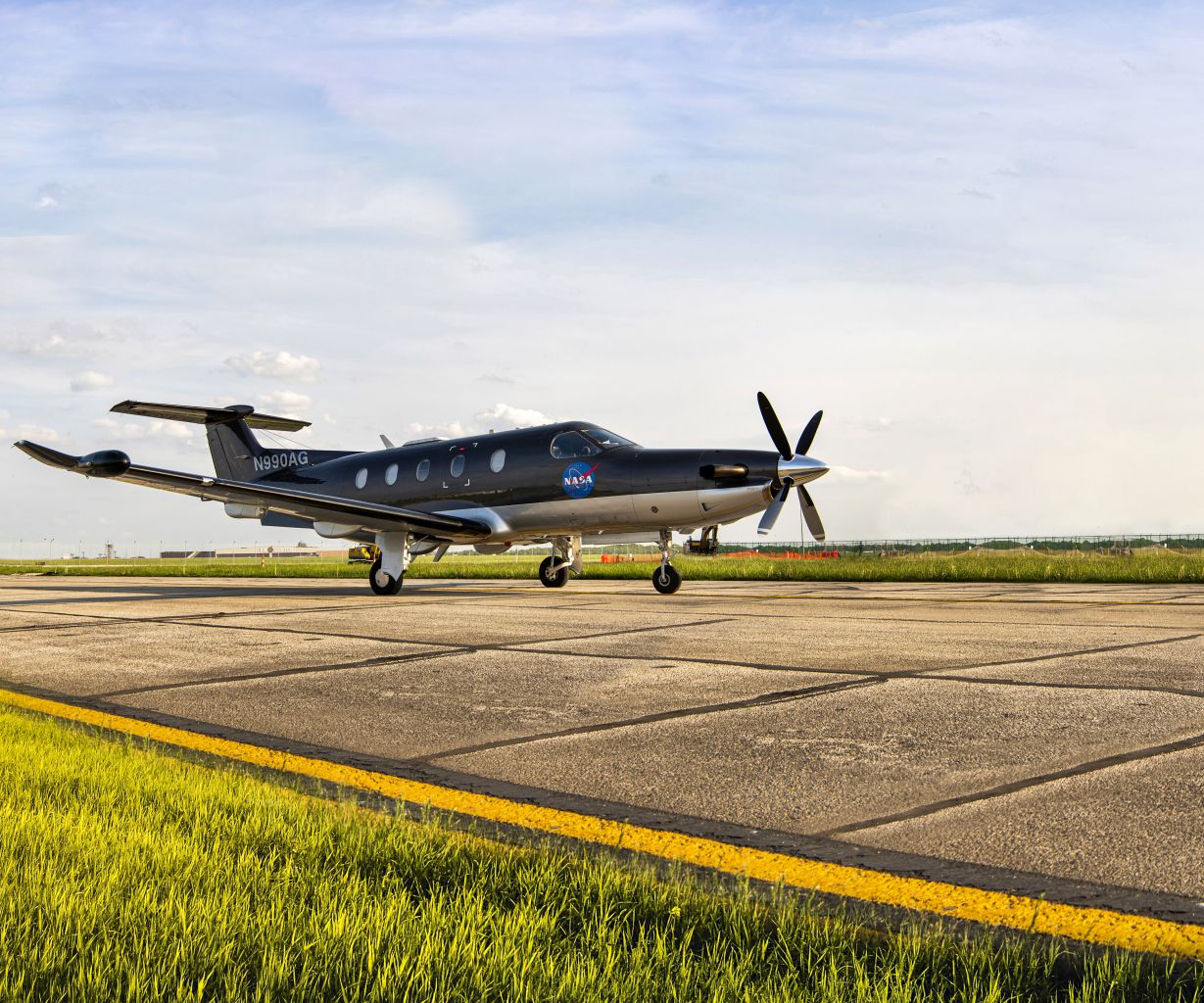The NASA Glenn Research Center in Cleveland has found the perfect tool in the PC-12. Using this versatile turboprop, a wide range of aeronautical research programmes can now go ahead for NASA.

After two older aircraft had to be retired, the research centre undertook a detailed study to find a suitable replacement for NASA projects. “We were looking for an aircraft capable of flying at both high and low altitudes, with good fuel efficiency and the cargo capacity to carry researchers and monitoring equipment”, explained James Demers, Head of Glenn’s Flight Operations.
Why the PC-12?
The PC-12 offers exactly the kind of versatility needed by NASA. The turboprop can fly long flights at cruising speeds of up to 333.68 mph at a maximum ceiling of 30 000 feet. It can also land on short runways and unpaved strips. Researchers can make full use of the aircraft to test communication technologies for national airspace. The PC-12 plays a key role in this work.
How the aircraft will be used
NASA plans to modify the aircraft interior to deploy it for a variety of aeronautical research missions. Primary research will focus on assessing commercial communication technologies that will enable future transportation systems to fly passengers or goods across urban and suburban areas at low altitudes. The performance of a prototype radio system for in-flight information exchange between aircraft and air traffic control in a built-up environment will also be tested. Rafael Apaza, deputy project manager on NASAТs Air Traffic Management eXploration project, will attach antenna designs to the aircraft with his team to allow investigation of configurations and data transfer with radio systems on the ground. This is expected to deliver major advances in achieving a better understanding of communication technology for future flights.
Supporting aviation research
This will also support NASAТs Advanced Air Mobility mission aimed at designing a safe and accessible new air transport system. In the future, passengers and cargo will be able to travel in innovative automated aircraft. James Demers concludes by making it clear how much the research centre is looking forward to taking delivery of the PC-12. He hopes that these promising initiatives will deliver concrete benefits in the future.

